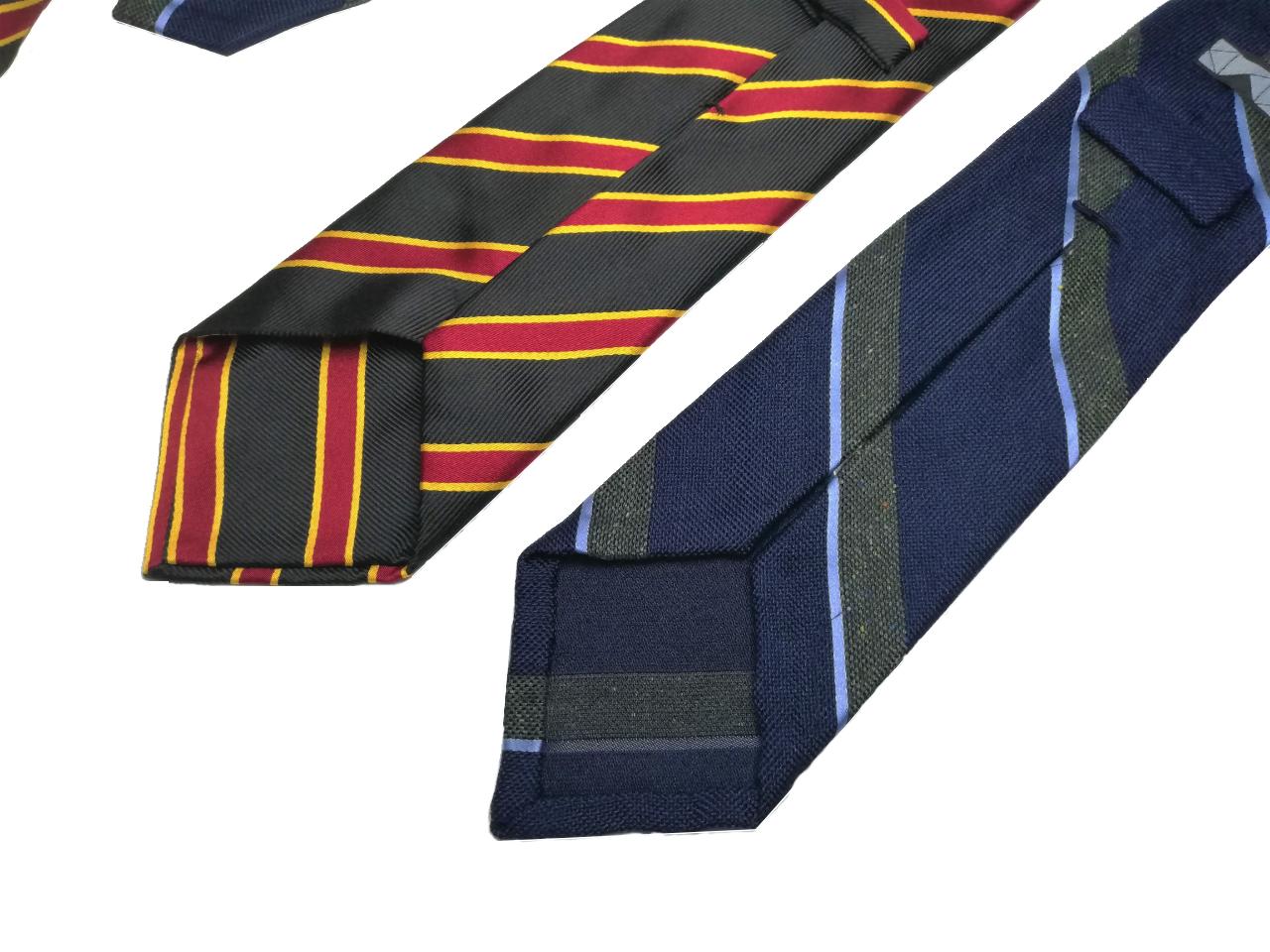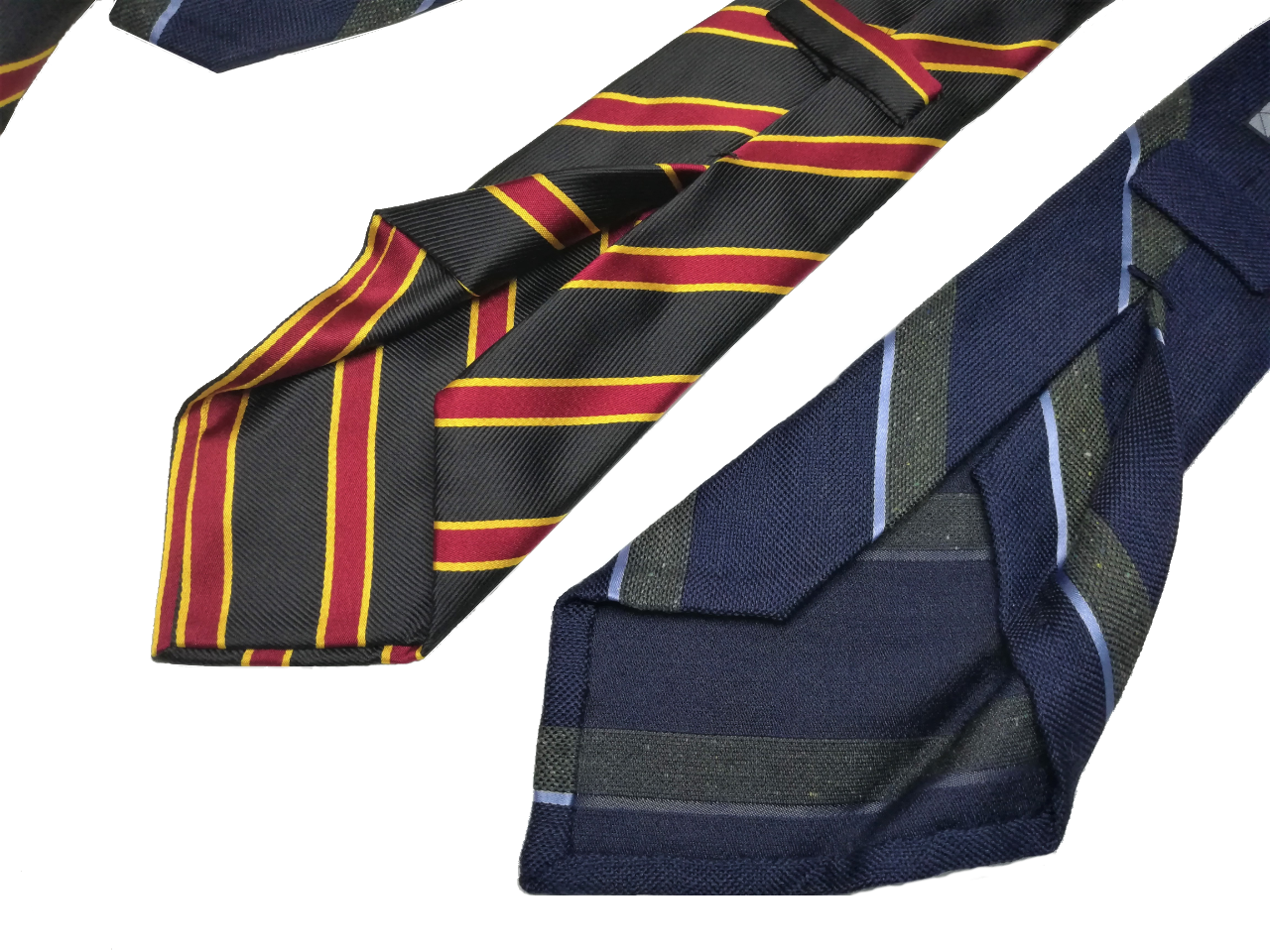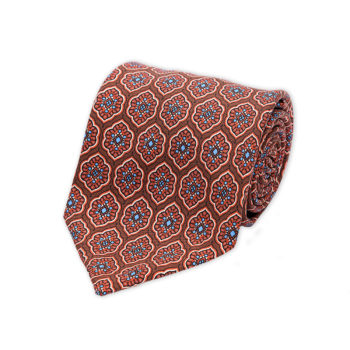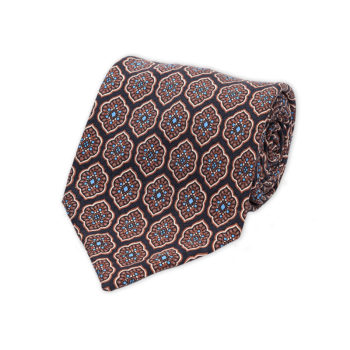What are Untipped Ties and what are their differences compared to Self-tipped ties?
If you are keeping up with our posts so far, you should be by now aware of the different ways ties are constructed, the different fabrics used, their properties and more. Another differentiation in ties is that of tipping. Ties can be categorized as self-tipped or untipped.
Untipped ties are those ties that the back of the blades’ tips haven’t be closed with fabric, while self-tipped ties have their blades’ tips closed with the same fabric used for making the tie, or a cheaper alternative. Now days the majority of ties are self-tipped and only very few tie makers can afford to offer untipped ties.
“The left club tie is self-tipped with the same fabric used for the tie, while the blue stripe tie is untipped and the back of the fabric is visible allowing for some peeping of the fabrics weave”
Why to select an untipped tie, instead of a self-tipped tie?
Self-tipped Ties
Self-tipped ties require some extra fabric and for this reason use the same fabric for tipping. This is not necessarily a sign of luxury but at least is some sign of quality. Most tie makers use a synthetic or other material fabric, sometimes printed or weaved with the brand’s name, as tipping fabric, which is a clear sign of cost cutting efforts. Ties with different tipping fabric are called tipped ties.
Self-tipped ties require less work from the tie maker and it is a faster and easier process for making a tie. In fact there are sewing tools that can complete the self-tipping of the tie in less than 3 minutes, while untipped ties will require about 20 to 40 minutes for the tipping. More on this point below.
Full length lined ties, these are ties that use interling from one tip of the tie all the way to the other tip of the tie, require self-tipping to hide the interling at the tips of the tie and keep the interlining in place.
There are occasion that seven fold unlined ties use self-tipping as a choice of style, but keep in mind that self-tipped ties are shade heavier than untipped ties.
“Ties’ folds have been opened. The extra fabric is visible in the red stripe tie. The length of the hem and the warp and weft are visible in the blue stripe tie”
Untipped Ties
Untipped ties can be those ties with unlined constructions such as 7-fold ties, the Italian 6-fold ties, 4-fold unlined and lightly lined 3-fold ties, as such tie constructions have no interlining or at least interlining is minimal and hidden in the deeper part of the tie.
The construction of untipped ties requires more hand work and is a detailed work, as the hem at each blade must be patiently hand rolled by capable and steady hands. This hand rolling can take from 20 to 40 minutes for each tip of the tie and depends very much on the tie construction.
Seven fold tie construction requires up to 40 minutes of hand work due to the length of the hem, which when unfolded is longer (see photo above) than that of a 3-fold construction’s hem. Compared to the 3 minutes required for the self-tipped tie tipping, untipped ties’ construction is a labor intensive work, a more expensive construction and this justifies the higher price of untipped ties compared to common tipped ties.
Does it worth it? Definitely!
Untipped ties when constructed properly are high quality ties with well-balanced tips and a subtle elegance. They are lighter to wear, have a more flexible drape and are more playful. Their airy character makes them ideal for warmer climates and if made of loose weaved fabrics such as grenadine, untipped ties allow for a see through effect.

Dapper men will enjoy the artisanal construction, the ability to study the fabric’s weave, the wrap and the weft of the jacquard fabrics and the quality hand sewing, especially if it is invisible like KYDOS construction
See our Tie Collection Here





